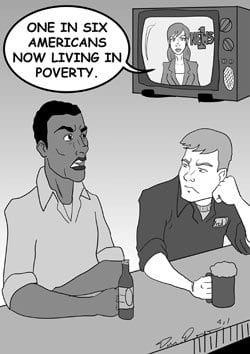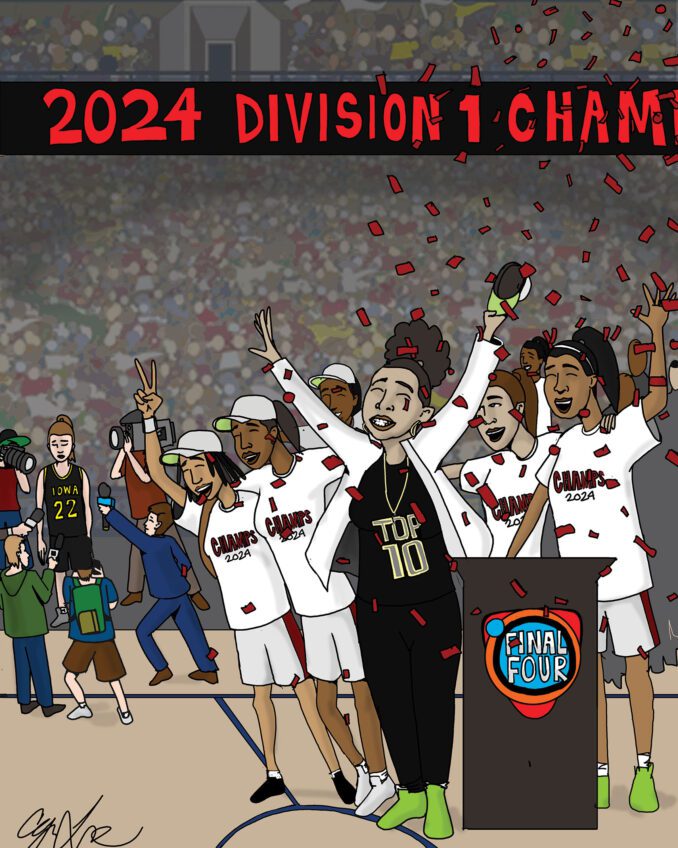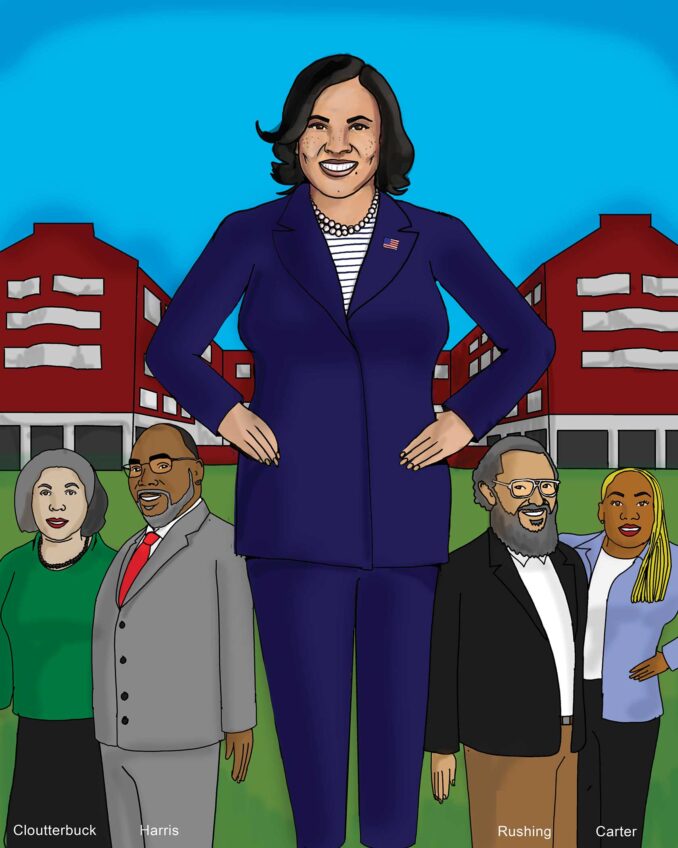
A social crisis
| “So much for ‘America, the land of opportunity.’ ” |
The American Dream is to own a profitable business. That is a good thing. The enterprise provides affluence to the owner and employment to others. According to the economic model, everyone is supposed to benefit.
That has not been happening. The Census Bureau reports that 2.6 million people fell below the poverty line last year. With 46.2 million people now in poverty, that is the greatest number in 52 years. While the working class and the middle class struggled to survive in the recession, the well-to-do captured more of the national income.
According to an analysis of 2008 taxes by the tax foundation, the top 1 percent of taxpayers reported more than 20 percent of all income. And one half of that income went to a small group of the very wealthy that constitutes only one tenth of 1 percent of all taxpayers.
So what went wrong? There was a time from 1947-1979 when increases in productivity resulted in pay raises, but that has not been happening since 1980. There are undoubtedly many other reasons for the salary stagnation that is afflicting the middle class. It is questionable, however, that Americans will long tolerate the greatest income and wealth disparity in the industrialized world.
The social contract upon which this nation has relied to establish a cohesive citizenry is at risk.
NIH unearths racial barriers
No one with an understanding of American race relations believes that the problem of discrimination was resolved with the election of Barack Obama to the White House. However, everyone has to concede that his election was a great step forward. With Obama’s success, well- educated African Americans thought that their professional progress would be less impeded.
A recent report revealed that racial discrimination is still alive and well. At the National Institutes of Health (NIH) researchers discovered a substantial disparity in the awarding of research grants. White scientists were successful 25 percent of the time compared with only a 15 percent success rate for blacks. The results for Asians and Latinos were equivalent to that for whites.
Between 2000 and 2006 there were more than 40,000 applications for grants. The process required that the proposals be sent out for peer-review. The race of the applicant was not revealed to the review panel, but it was relatively easy for them to determine race. Some applicants are alumni of historically black colleges or on the faculty. Most applicants have already attained a sufficiently high level of achievement that biographical information about them is readily available on the internet.
The study does not assert that the African American applicants are academically inferior. In fact, the NIH commissioned the study because they were mystified by the failure rate of so many highly qualified African American scientists.
Perhaps the NIH has inadvertently unearthed evidence of the subconscious racial discrimination syndrome. Peer blacks sometime find that while their white colleagues are courteous and accommodating, there nonetheless seems to be an ingrained belief in black inferiority.
Those old enough to remember the hostile racial propaganda during the Jim Crow and civil rights eras are not surprised that negative opinions about blacks have been psychologically implanted in some whites. The NIH deserves credit for recognizing the problem. Now they have the task of finding a solution that does justice to every applicant.






